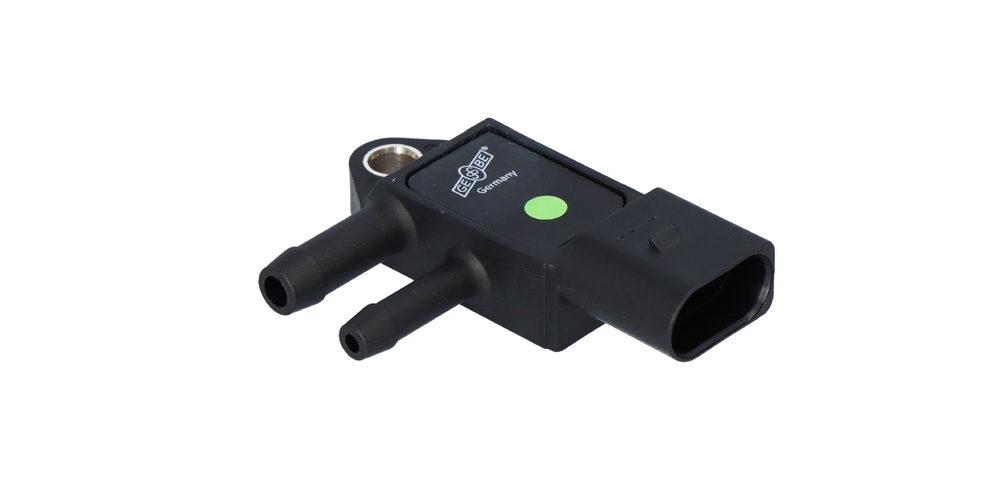A downstream particle fitter with sensoring is increasingly being installed in gasoline engines with direct injection, in order to comply with the legally required limit values. The sensor is usually installed on the front wall and connected to two vacuum hoses with different diameters (cannot be mixed up) via a measuring pipe before and after the particle fitter.
The fitter itself represents a flow resistance that changes as the load increases. The sensor contains a membrane with piezo ele ments on which the corresponding exhaust gas pressures act. With a low load, the pressure in front of and behind the fitter is almost the same. As the load increases, the exhaust gas pressure in front of the fitter increases. Since the level of the differential pressure changes depending on the engine load, the air mass sensor is also included in the calculation by the engine control unit.
Determining the correct causes of errors
lf the engine control unit recognizes a defective pressure sensor as an error, it is very important to identify and eliminate the cause of the failure during the inspection by the workshop. lf this does not happen, the customer often has a legitimate complaint. Here are some examples from practice.
The most common cause of failure is damage to the tubing be tween the sensor and fitter. In modern vehicles, the hoses are rarely completely visible or easily accessible!
The tubing can be damaged by animal bites or, with advancing age, become porous, leaky and soft, so that it may contract and block the flow completely under slight negative pressure.
Blockages in the forward lines due to residue are also not un common. The deposits also cause problems for the sensor, caus ing the membrane to stick and thus display increased values even before the engine is running. The most common cause of this is a carbonized EGR module, which in older vehicle types does not yet have a position sensor and is therefore not recognized as a fault by the engine control unit.
Since the air mass sensor is also providing values to the calcula tions done by the engine control unit, an undetected defect may also exist here; the differential pressure sensor may therefore be incorrectly reported as being faulty.
lf the vehicle has a high mileage and the interval for changing the particle fitter has not been adhered to, you cannot avoid replacing it.
Since each regeneration produces ash that cannot be burned, this leads to clogging of the fitter. The amount of ash is calculat ed by the engine control unit and in some cases differs signifi cantly from the actual value. The reasons for this are oil com bustion residues caused by mechanical errors in the crank mech anism or an increased sulfur content in the fuel.
Once the cause of the failure has been identified and eliminated, the sensor can be replaced. To do this, it is almost always neces sary to perform a new calibration of the differential pressure sensor with the ECU.
Since the failure of the sensor is not always immediately recog nized by the engine control unit, a forced regeneration cycle should be carried out before handing over the vehicle back to the customer, thus making sure the fitter is clean.
